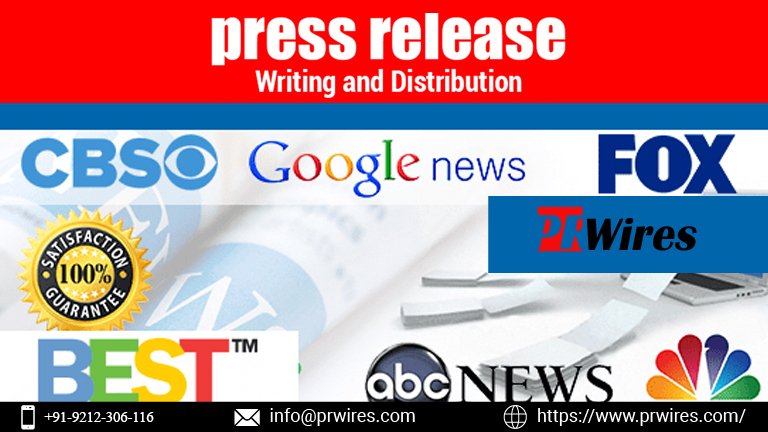How To Write A Press Release That Will Get You Covered By Major Media Outlets
Writing a press release is an important part of your PR strategy. It can help you gain coverage in publications and online media outlets, which is how most people learn about your business. In this article, we'll talk about how to write a great press release that will get you coverage from major media outlets like CNN or The Washington Post.

Introduction
Writing a press release is an important part of your PR strategy. It can help you gain coverage in publications and online media outlets, which is how most people learn about your business. In this article, we'll talk about how to write a great press release format that will get you coverage from major media outlets like CNN or The Washington Post.
The Golden Rule of Press Releases
The golden rule of press releases is to keep it short and sweet. The shorter the press release, the better. The shorter the press release, the more likely it will be read by media outlets and published on their sites or in other publications. That’s because when journalists have a lot of information at hand on any given topic they don’t have time to read long-winded letters from companies who want them to cover them or write about what they do—they just scan quickly through all of those messages until one catches their eye so they can decide which ones deserve attention based on merit rather than length (if there even exists such thing).
The Headline
The headline is the most important part of any news release example, so it's important to get it right. You want your headline to be short and punchy, but with enough information that people will want to read on.
The best way to do this is by writing in the present tense (e.g., "Apple Announces New iPhone Lineup"). This style makes it easier for readers to imagine how they'd feel if they were reading this story instead of just seeing words on a screen or being told about them from someone else's mouth. The second best thing you can do here is make sure that whatever you write relates directly back into what happened during the event itself: If Apple announced new phones yesterday afternoon at their headquarters in Cupertino California then using past tense like "Apple unveiled its latest line-up" isn't going anywhere near close enough for many journalists who aren't necessarily fans of technology companies themselves!
The Subhead
The subhead is the second most important part of a media release example, and it should be a short summary of the story. It should be compelling and interesting, written in the same style as the rest of your press release.
Subheads can also include quotes (if they're relevant) but don't use them unless they are essential to understanding what you're writing about. If possible, avoid including any quotes at all—they will just distract from your main message.
The Lead Paragraph (and the Five Ws)
The lead paragraph is the first sentence of your sample press release template. It should be short, and it needs to give readers a sense of what they can expect from reading further into your story.
The five Ws are used to help writers determine whether or not their audience will be interested in reading about something: who, what, where, why and when. This list can also be used as a checklist for writing effective headlines and subheadlines as well.
About the Company in the Press Release
The first thing you should do when crafting your press release is to include a brief biography of the company. This can be written by someone at the company or by you, if you have any relevant information to share.
You may also want to include some background on how long the business has been in existence and what its main mission statement is. You should also give some details about its history, including its founding date and who founded it (if anyone). If there are any notable extenuating circumstances that led up to this point in time—like an acquisition or merger—it's important that these details be included here as well.
Quotes in a Press Release
Quotes from your target audience can help you establish credibility with them and provide context for the message you’re sending.
In the current climate of fake news and media bias, quotes are a great way to add depth to your press release example for new product
If you quote someone else who has said something similar to what you’re saying in your release (or even better, if they say something that sounds like an exact quote), then it makes sense for them to be quoted alongside yours as well. This will make it clear that there are other experts out there who agree with what you have written—and more importantly, why they should care about what you have written!
Contact Information in a Press Release
The contact information for your PR person should be included in the event press release template. In addition to their name and phone number, you'll want to include their email address so that they can respond if necessary. If you don't have a separate PR person yet, but are looking for one who could help with this project specifically, then feel free to add their contact details as well—just make sure it's clear that they're only responsible for handling media inquiries related to this specific project (and don't forget: always include your own name).
Boilerplate Language for Your Business
When you're writing a press release, it's important to use the same boilerplate language for your business as much as possible. This will help readers understand what you do and why they should care about it, which helps them feel more connected with whatever story you're trying to tell.
The most common type of boilerplate language is called "boilerplate." Boilerplate comes from the word "to boil," which refers to boiling down information into simple statements that can be easily understood by both reporters and their readers. So when companies use this kind of language when they write press releases, they want their message delivered clearly without getting lost in unnecessary details or jargon.
Release Date, Embargo and Distribution Details in a Press Release
Release Date, Embargo and Distribution Details in a Press Release
The release date is the date by which you must distribute your press release to media outlets. The embargo is the date by which all distribution information must be revealed including contact details for any individuals or companies involved in the announcement. Distribution details include:
Who will receive it?
What time period does it cover?
How many copies are available at this time (e.g., 1,000)?
Writing a press release can be an important part of your PR strategy.
Writing a press release is an important part of your PR strategy, and it should be written in a way that will get you covered by major media outlets. There are several things you can do to make this happen:
Write clearly and concisely. This means using active language, not passive or impersonal (“the company was founded by Thomas Edison”). Also keep in mind that headlines like “Company X launches new product Y” aren't always best for getting attention from reporters since they're too general (you could say "Company X introduces new product Y"). Instead choose a more specific headline like "Company X Introduces New Product Z".
Keep it short! Most reporters don't have much time to read long articles—and no one wants their inbox flooded with unnecessary fluff either! A good rule of thumb is no more than 500 words per article; shorter is better here since shorter pieces are easier to digest quickly."
Conclusion
As you can see, there’s a lot to learn about writing a press release, but it doesn’t have to be hard! If you follow these simple tips and guidelines for crafting your own press release, you’ll be able to get all the coverage and attention you need from media outlets. As we discussed earlier in this article, it also helps if they cover your story in a positive way. So get started on an exciting new chapter of your career today by learning how to write a press release that gets noticed!
Get in Touch!
Website – https://www.pressreleasepower.com
Skype – shalabh.mishra
Telegram – shalabhmishra
Email –contact@pressreleasepower.com
Mobile – +1 (855) 222-4111
What's Your Reaction?


















